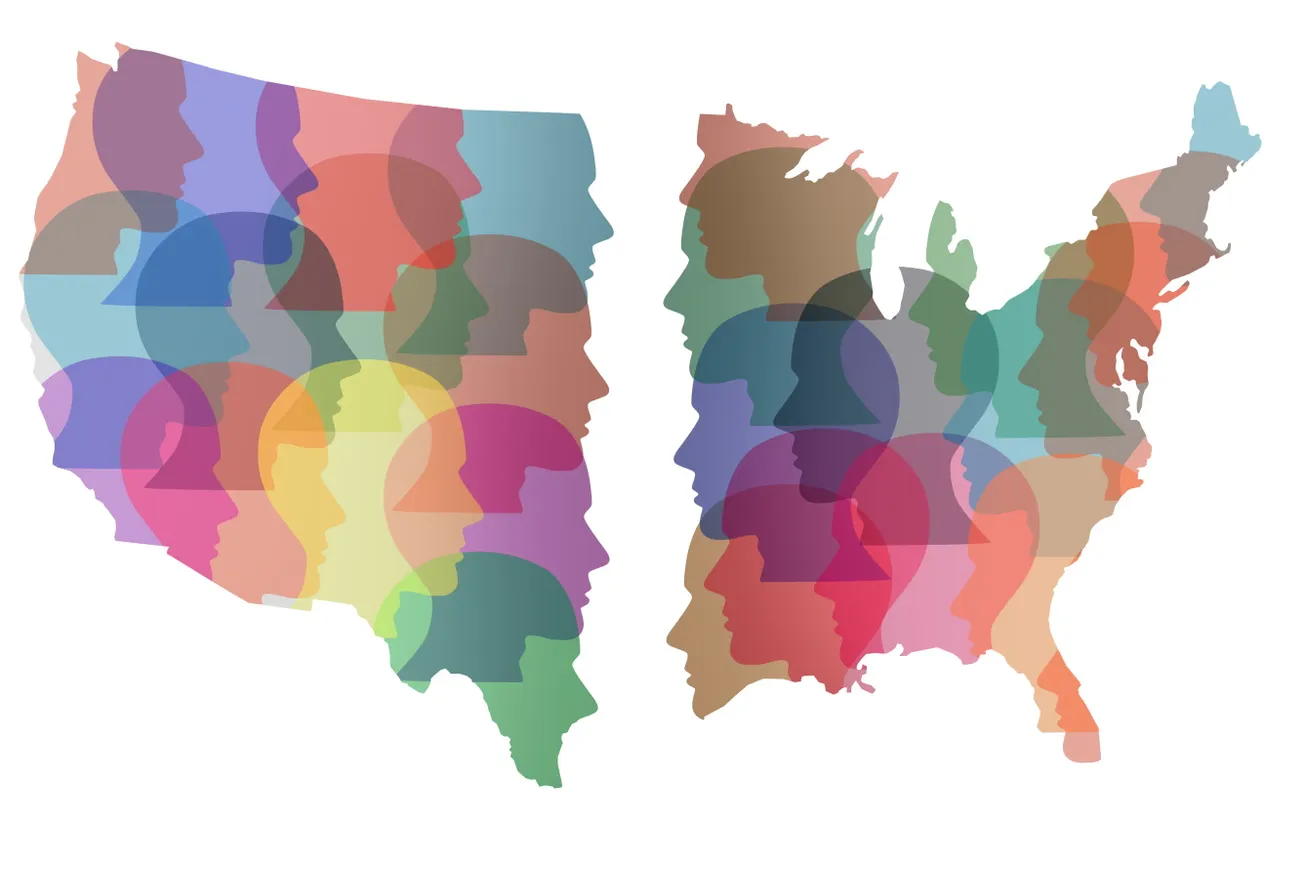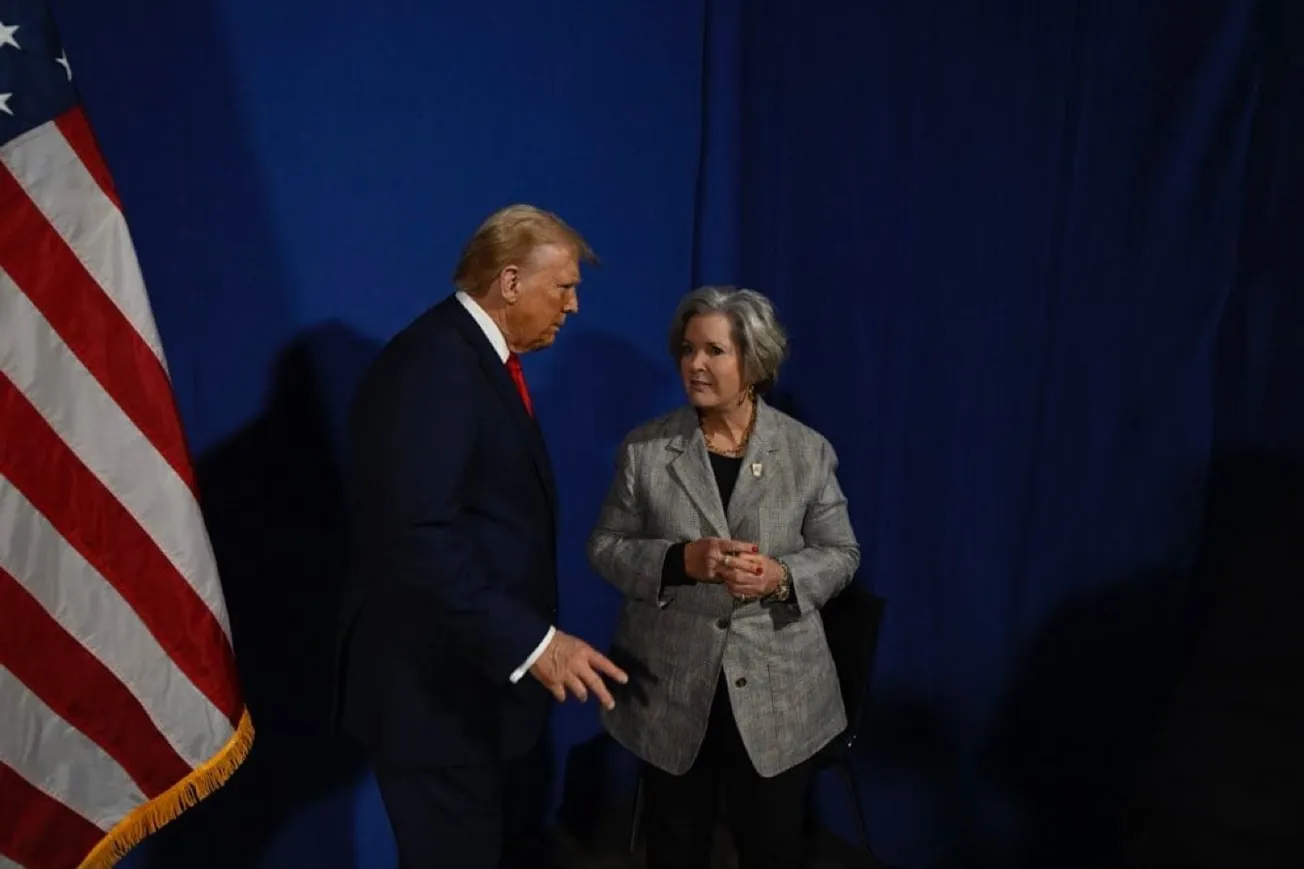Americans remain deeply gloomy about the state of the nation’s unity, new data from the latest I&I/TIPP Poll show. The big question that looms is will the electorate’s sense that the U.S. has become more fragmented have a major impact on the outcome of the midterm election?
Each month, I&I/TIPP asks voters “In general, would you say the United States is”, followed by five possible responses: “Very united,” “Somewhat united,” “Somewhat divided,” “Very divided,” and “Not sure.” From these data we get a monthly reading, plus create an index that allows us to make comparisons over the lifetime of the index.
For October’s poll, the results showed a nation deeply concerned about the lack of unity of their fellow citizens, suggesting a growing political, cultural and ideological fragmentation among the electorate.
Just 28% said the nation was “united,” with only 13% saying “very united” and 15% saying “somewhat united.” That compares with 69%, or more than two to one, calling the nation “divided.” That includes 28% saying we’re “somewhat divided” and 41% saying we’re “very divided. Only 3% said they were not sure.
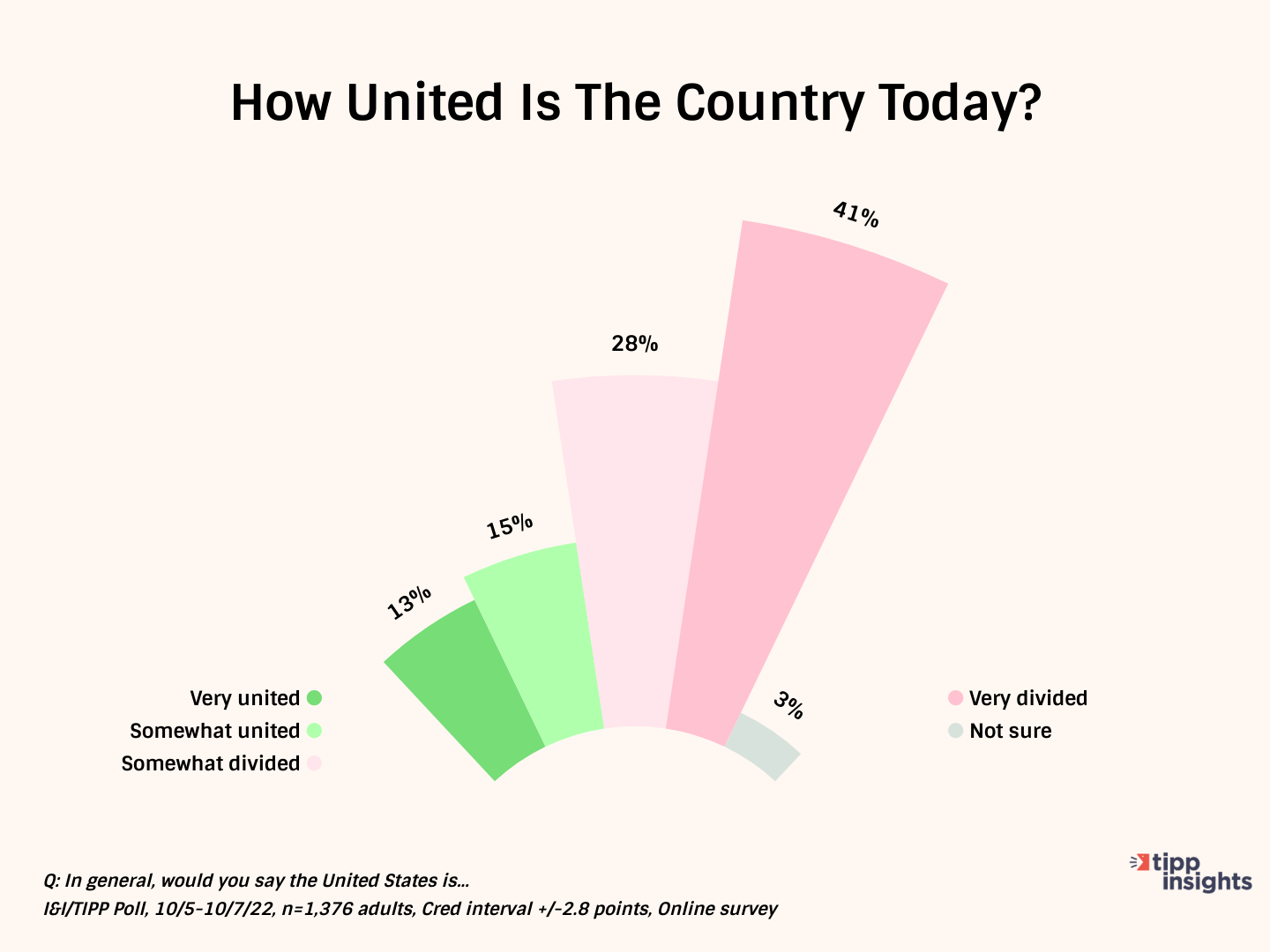
The poll, taken online of 1,376 adults from Oct. 5 to Oct. 7, has a margin of error of +/-2.8 percentage points.
A majority of all the major political groupings believe America is divided. But Democrats are the least glum: 53% say we’re divided, versus 46% who say we’re united. That compares with Republicans at 80% divided vs. 18% united, and independents who are nearly equal at 79% divided and 16% united.
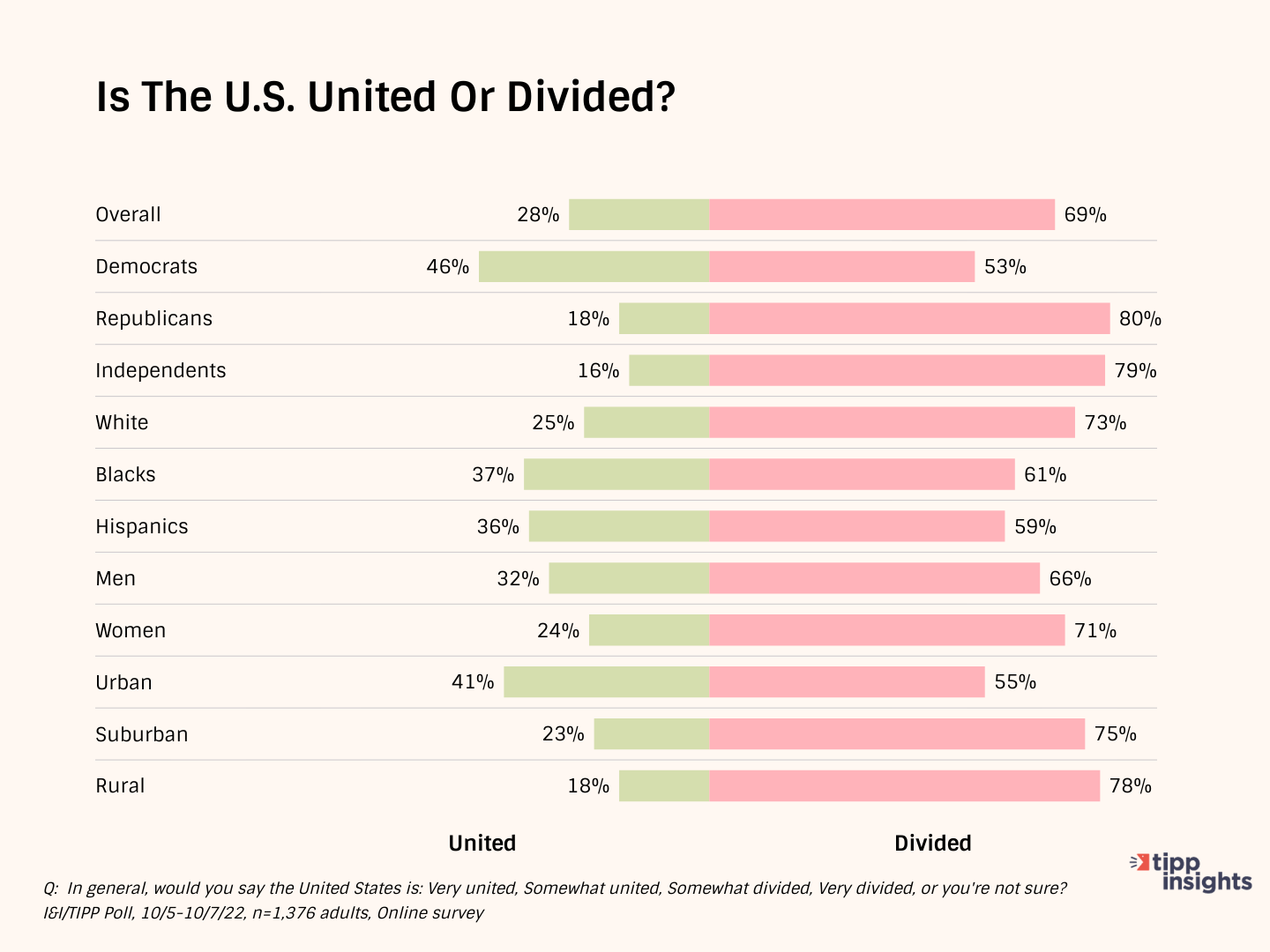
Indeed, among the 21 major demographic and political groupings I&I/TIPP tracks on a monthly basis, none had a majority saying Americans were united.
So it’s a fact, at least as Americans themselves are concerned: America is indeed a divided country.
As the I&I/TIPP Unity Index shows, the trend isn’t improving. The index began in April of 2021 as a way to gauge what at the time appeared to be a significant amount of angry public debate over major policies.
That index started at 37.8 in April 2021, and rose as high as 39.5 in July of 2021. Neither of those numbers, by the way, are even close to what would be called the “breakeven” rate of 50 for unity.
Since the first few months, however, the index has declined. From an average of 34.9 for 2021, this year so far it’s averaged 30.7. For October, the index stood at 32.3.
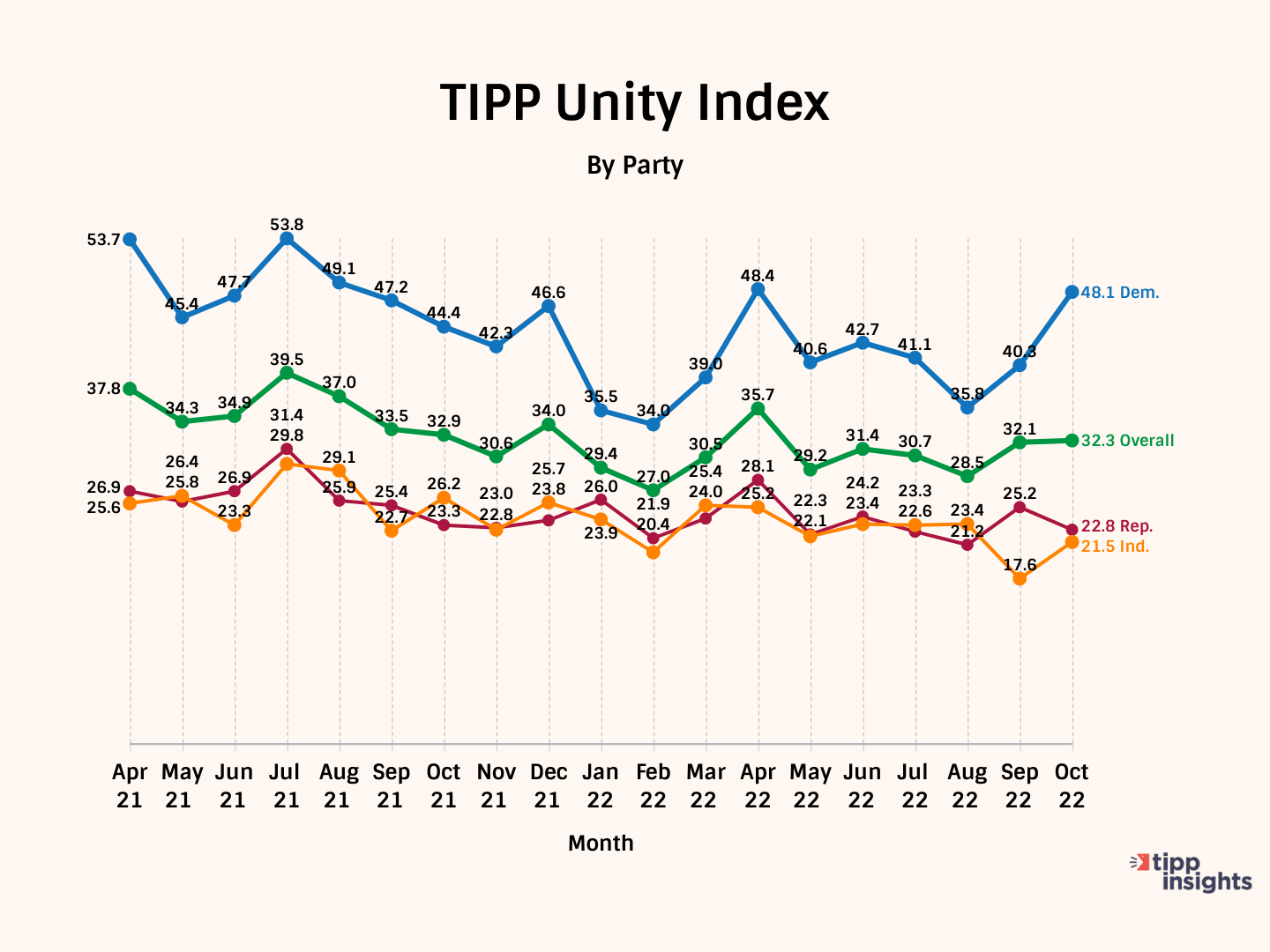
It’s important as well to note that the I&I/TIPP Unity Index is no outlier. Other soundings of public opinion get broadly similar results.
This is significant, since President Biden, strongly supported by the Democratic Party, entered office vowing to “unify” the country after President Trump’s four years in office.
“I pledge to be a president who seeks not to divide, but to unify. Who doesn’t see red and blue states, but a United States,” Biden said on November 23, 2020.
Sadly, those words did not come true.
As poll after poll shows, Americans are as divided as ever, if not more so, when it comes to politics. A big reason for that is Biden himself, whose popularity is waning even among Democrats. “Woke” culture, which seeks to shut down speech along political lines, is another reason for the divide.
The Red-State, Blue-State division is now mirrored down to the local and even family level, thanks to the pervasive influence of social media and their woke speech referees. A random comment on politics, easily forgotten or shrugged off in the past, now becomes a permanent online scarlet letter that can lead to someone being canceled or fired from a job.
For many it’s become personal, even destroying familial relationships. As a New York Times/Siena College poll found just this month, “nearly one in five voters said that politics hurt their friendships or family relationships.”
At the national level, the schism between Red States and Blue States seems never to have been wider, signifying perhaps growing regional debates over key issues ranging from abortion, immigration, crime, taxes, the size of government, education, free speech, the Russia-Ukraine war, climate change and a host of other hot-button topics.
A survey a year ago by the University of Virginia’s Center for Politics found a quarter of Trump backers saying they “strongly agree” that red states should consider seceding from the U.S., while 18% of Biden supporters said the same thing.
“The divide between Trump and Biden voters is deep, wide, and dangerous,” Center for Politics Director Larry Sabato told the New York Post. “The scope is unprecedented, and it will not be easily fixed.”
No doubt, with campaigns in full swing and political rhetoric at a high boil, the coming elections will continue to exacerbate tensions over both policy and the general direction of the country in the coming days.
But what about when the election is finished? Will it make a difference? Will tempers cool, and political passions subside? Perhaps somewhat, but don’t look for the divisive anger to disappear anytime soon.
As reported by Breitbart, an April 2022 Rasmussen Poll found:
Voters are divided as to whether the upcoming congressional elections will help unite the country. Thirty-eight percent say Republicans winning a majority in Congress could help heal the nation, while 31% say the same of a Democrat victory. Twenty-seven percent say a win for either party would not make much of a difference.
Our own polling shows fairly persistent differences on a wide variety of issues among Americans. Those differences are based largely on political affiliation, but also break along lines of gender, race, income, and region, among other demographic categories.
Polls and anecdotal reporting today show that passions are high. Republican and Democratic voters are highly motivated, with the GOP appearing to have a growing edge and even, possibly, a “red wave” election building.
Democrats and the mainstream media both seem resigned to such an outcome.
In order for that to happen, the silent majority of independent voters who choose to belong to neither major party and make up an estimated 40% of all voters will likely decide the outcome of the 2022 elections. As we’ve noted in repeated polls over recent months, the independents appear to be leaning away from the Democrats and toward Republicans.
I&I/TIPP publishes timely and informative data each month from our polls on this topic and others of public interest. TIPP’s reputation for excellence comes from being the most accurate pollster for the past five presidential elections.
Terry Jones is an editor of Issues & Insights. His four decades of journalism experience include serving as national issues editor, economics editor, and editorial page editor for Investor’s Business Daily.
Please email editor-tippinsights@technometrica.com
Please share with anyone who would benefit from the tippinsights newsletter. Please direct them to the sign-up page at:
https://tippinsights.com/newsletter-sign-up/

